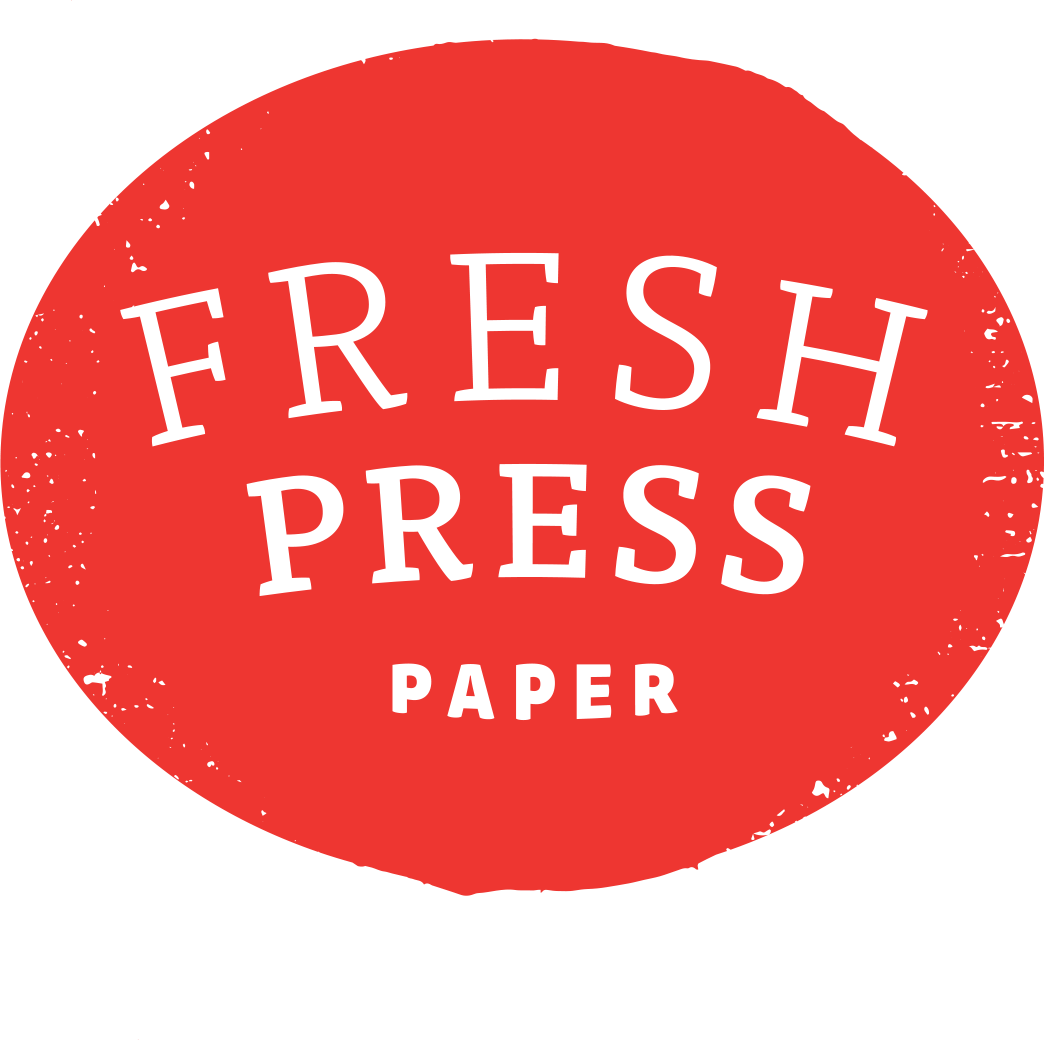Environmental Impact
We started Fresh Press because we wanted to make sustainable paper that renourished the environment and could change the industry. Everything we do here, we keep our natural environment and human/wildlife health top of mind. We aren't perfect. No one is, but we are trying. This section details our successes and shortcomings when it comes to minimizing our environmental impact.
#paperwithpurpose
Our Successes
Two of our four rain barrels in winter.
Our Shortcomings
AQB is a little too short to hold such a big sheet of paper!
What we’re currently doing at our studio to reduce our environmental footprint:
Cook with rainwater
Recycle our paper and trimmings back into new paper
Recycle cardboard boxes and plastic/glass
Utilize 100% off-grid solar power at our SSF facility
Use an electric chipper (no gas)
Use only local natural materials that can be considered waste
Pay a local living wage to our employees
What we’re working towards at our studio to reduce our environmental footprint. We hope to:
Have a solar powered studio
Offset energy via Terrapass
Use a people-powered (bike) beater
Filter and reuse all our water
Install and use a solar cooker for our fibers
Use all organic cotton in any paper blends
We are constantly looking for grants where we will be able to purchase equipment that will help us reach these goals....
Our Transportation Emissions
From the Sustainable Student Farm to Fresh Press our paper travels a total of 4.4 miles emitting about 4 lbs of greenhouse gases (if we drive!). Compare that mileage to tree-fiber paper which has to travel around 2.700 miles from the Boreal Forests in British Columbia, Canada to paper mills in Wisconsin and finally to Illinois. With Fiber you save 2,353 lbs of greenhouse gases by transportation from entering our atmosphere.
Our Carbon Footprint
The paper we make with the smallest carbon footprint is made with Illinois prairie grass. The making of this paper emits 67% less greenhouse gas (GHG) emissions than normal wood fiber paper. The remainder of our paper’s carbon footprint is a bit more difficult to determine. Due to differences in farming equipment, soil regeneration, watering schedules, etc., it is challenging to get an exact number, and instead only ranges.
Our Water Savings
In our cooking process, we use rainwater collected from our lab rooftop. We use 5 gallons of water per stockpot and save 15 gallons of municipal water per cooking cycle. Overall we save 60 gallons of water/month.





